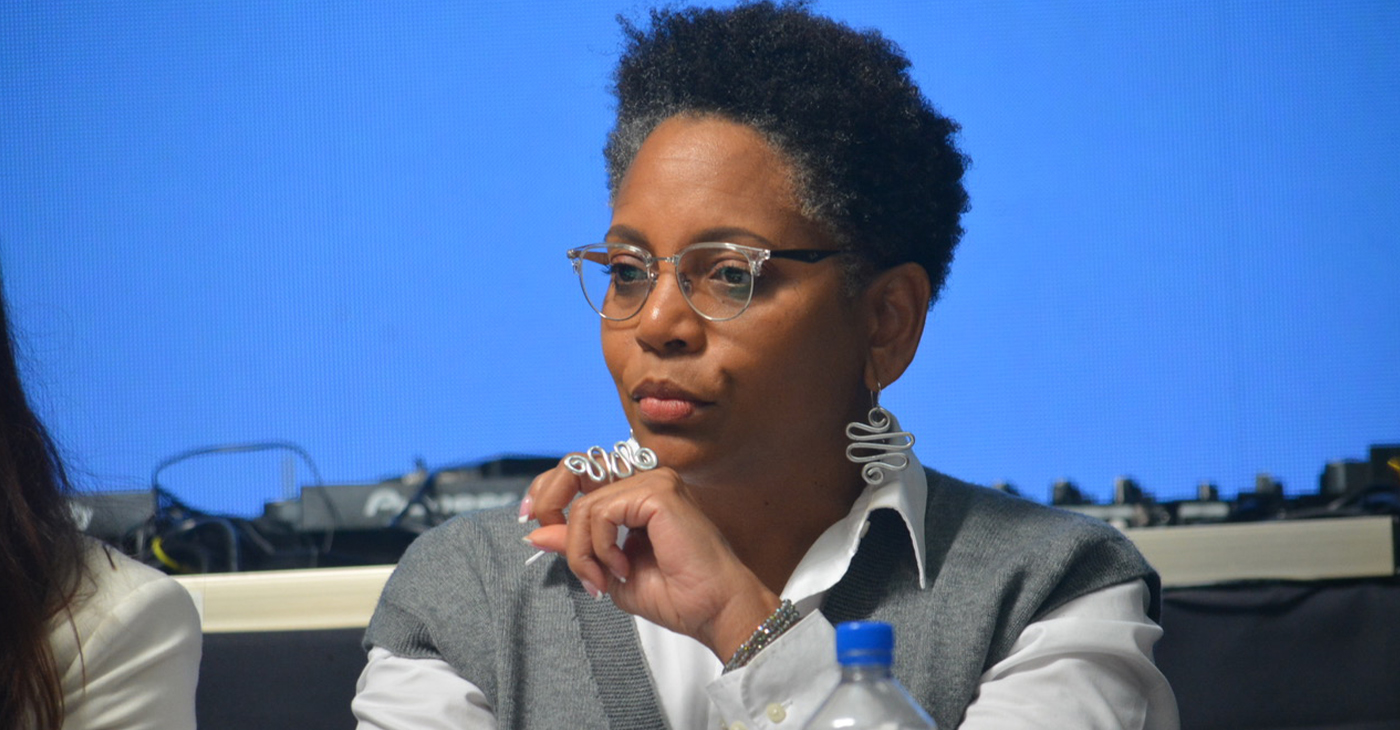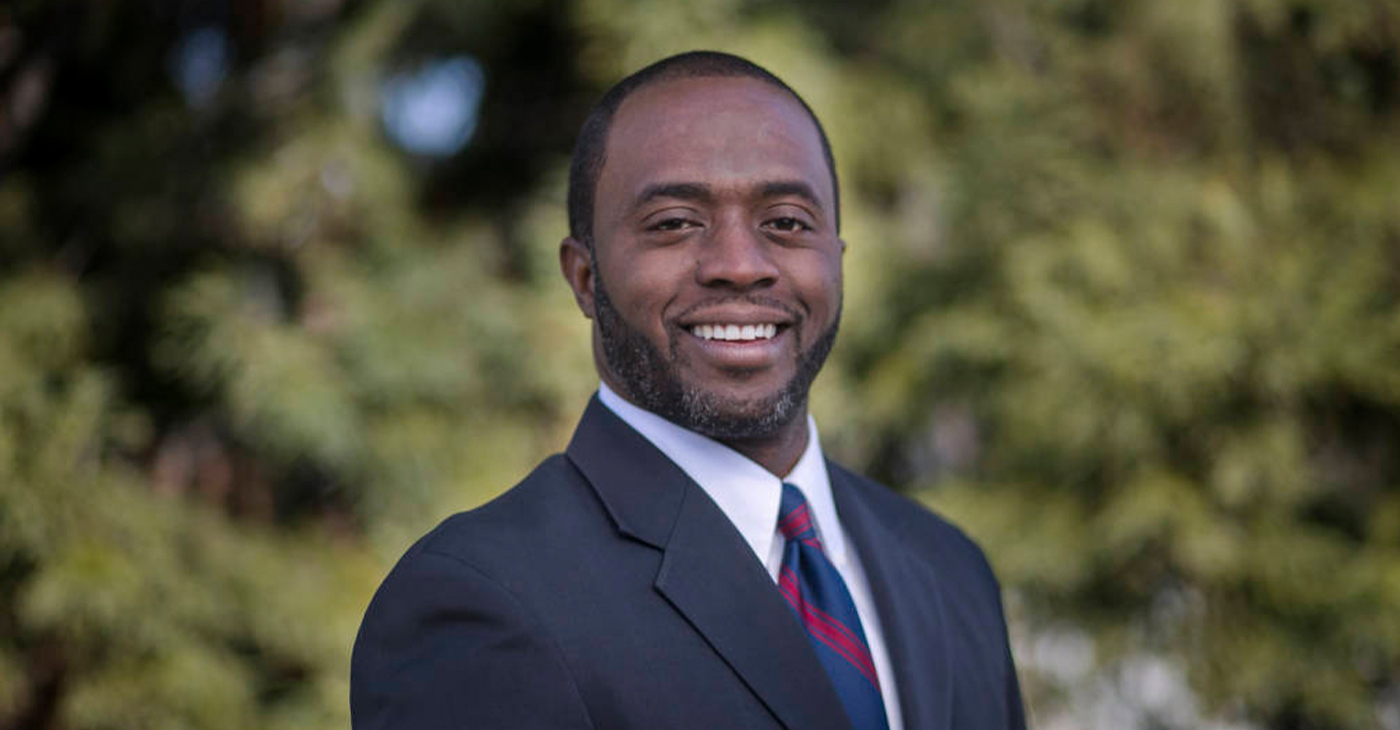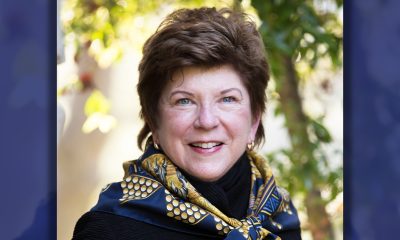California Black Media
Seven Initiatives Qualify for California November Ballot
Special interest groups have raised more than $370 million to convince voters to either pass or reject the initiatives. Over 88% of the money raised is for settling whether two sports betting proposals should be legalized.

By Edward Henderson, California Black Media
The office of California Secretary of State Dr. Shirley N. Webber has qualified seven ballot initiatives for the November 8 statewide General Election. Seven is the lowest number of measures to appear on a statewide general election ballot since 2014.
One initiative is Senate Constitutional Amendment 10 (SCA 10). It is asking voters to safeguard a person’s right to reproductive freedom. To qualify for the November ballot, SCA 10 received the required 2/3 supermajority vote in each chamber of the Legislature.
The other six measures initiated by citizen groups are asking voters to decide on sports betting, funding K-12 art and music education, kidney dialysis clinic requirements, income tax to fund zero-emission vehicle projects, and a flavored-tobacco products ban. To be on the ballot, the initiative proponents were required to gather a minimum of 623,212 signatures verified by county elections officials. June 30 was the deadline for the measures to qualify for the November ballot.
Two other measures could have qualified for the ballot but were withdrawn by their sponsors. An initiative to increase the cap on medical malpractice lawsuits was withdrawn when the sponsors reached agreement with the Legislature and Assembly Bill 35 by Assembly Majority Leader Eloise Gómez Reyes and State Senator Tom Umberg, was passed and signed by Gov. Newsom.
An initiative to reduce plastic waste reduction was withdrawn after it was clear that Senate Bill 54 by State Sen. Ben Allen would pass. Gov. Gavin Newsom signed it into law in June.
Assembly Constitutional Amendment 3 (ACA 3), the California Abolition Act, which would have removed a clause in California’s Constitution that allows the practice of involuntary servitude as a means of punishing crime is not on the ballot because, while it passed the Assembly with the required 2/3 vote, it failed to get enough votes in the Senate.
Special interest groups have raised more than $370 million to convince voters to either pass or reject the initiatives. Over 88% of the money raised is for settling whether two sports betting proposals should be legalized.
The following are details on the fall ballot measures.
Proposition 1 – California Constitutional amendment to prohibit the state from denying an individual’s reproductive freedom
In response to the Supreme Court’s ruling to overturn federal protections for women seeking abortions, California lawmakers proposed a California Constitutional amendment to protect the reproductive freedom of women. Following the Supreme Court’s ruling, Gov. Newsom stated “Abortion is legal in California. It will remain that way. We will not cooperate with any states that attempt to prosecute women or doctors for receiving or providing reproductive care.”
Proposition 26 – Authorizes new types of gambling
This proposition would allow federally recognized Native American tribes to operate dice games, roulette and sports wagering on tribal lands. On-site wagering at privately operated horse-racing tracks in four specified counties for betters 21 years or older would become legal. Prop 26 also imposes a 10% tax on sports-wagering profits at horse-racing tracks and directs portion of revenues to enforcement and problem-gambling programs.
Proposition 27 – Allows online and mobile sports wagering
Currently, sports’ betting online is illegal in California. This proposition would allow Californians 21 and older to place bets online through federally recognized Indian tribes and eligible businesses like Draft Kings and FanDuel. Prop. 27 is estimated to increase state revenues by tens of millions of dollars yearly and potentially direct hundreds of millions of dollars in fee revenue to housing services for homeless Californians.
Proposition 28 – Provides additional funding for arts and music education in public schools
This proposition sponsored by former Los Angeles Unified School District superintendent Austin Butner would require the state to set aside $800 million to $1 billion annually beginning in 2023-24 for arts education in school. A greater proportion of the funds would be allocated to schools serving more economically disadvantaged students.
Proposition 29 – Requires on-site licensed medical professional at kidney dialysis clinics and other state requirements
This measure requires a physician, nurse practitioner, or physician assistant with six months’ relevant experience to be on site during treatment at outpatient kidney dialysis clinics. It authorizes an exemption for staffing shortages if a qualified medical professional is available through telehealth. Prop 29 prohibits clinics from closing or substantially reducing services without state approval and prohibits clinics from refusing to treat patients based on source of payment. This is the third attempt by SEIU United Health Workers West, a union representing over 100,000 health care workers and patients across the state, to pass the measure. Opponents of Prop 29 cite it would cost tens of millions of dollars annually for clinics to implement.
Proposition 30 – Provides funding for programs to reduce greenhouse gas emissions
Individuals with a personal income of over $2 million would receive a tax increase of 1.75% to raise between $3 billion to $4.5 billion a year to fund greenhouse gas initiatives. A majority of the funds would go toward incentives for Californians to buy zero-emission vehicles and build new electric charging or hydrogen fueling stations. Twenty-five percent of the funds would go toward wildfire fighting and prevention initiatives.
Proposition 31 – Referendum challenging a 2020 law prohibiting retail sale of certain flavored tobacco products
This proposition sponsored by the tobacco industry aims to overturn Senate Bill 793 signed by Gov. Gavin Newsom in 2020 banning the sale of all flavored tobacco products. A “yes” vote keeps the law and a “no” vote overturns the law.
California ballot measures require only a simple majority of the votes cast to be approved.
As new initiatives enter circulation, fail, become eligible for, or qualify for an election ballot, the Secretary of State’s office will issue status updates. The updates can be found athttps://www.sos.ca.gov/elections/ballot-measures/initiative-and-referendum-status or here.
California Black Media
Cinco De Mayo: Five Interesting Facts You Should Know About the Popular Mexican American Holiday
To explore the historical significance of Cinco De Mayo, we step back to the origins of the commemoration, share how some Mexican American Californians regard it and trace how it has morphed into the celebrations we see today.

By Edward Henderson, California Black Media
To explore the historical significance of Cinco De Mayo, we step back to the origins of the commemoration, share how some Mexican American Californians regard it and trace how it has morphed into the celebrations we see today.
Celebrations in the United States began in 1862 in Columbia, California, a small town located in the foothills of the Sierra Nevada in Tolumne County, according to that town’s website.
Today, millions of Americans celebrate Cinco De Mayo annually with 120 official celebrations organized across the United States.
This day has become a cultural point of pride for Mexican Americans and other Latino communities in the United States. It serves as a time to affirm and celebrate their cultures with other Americans of all backgrounds as they highlight their contributions to American history and society.
Joseph Soltero, a Mexican American living in Escondido, shared his perspective on Cinco de Mayo with California Black Media. He learned about Cinco De Mayo from his grandfather and talked about the extent to which his family and San Diego County community celebrate the holiday.
“We knew September 16 was really Mexican Independence Day, but kids in my school would always mistake Cinco De Mayo as our Independence Day. [Cinco De Mayo] is not really even a Mexican holiday,” said Soltero. “It’s something people do to have an excuse to buy drinks, have fun and spend a little money at taco shops.”
Like Soltero, many Mexican Americans (and other Latino Californians) do not take the support and solidarity they receive from people of other races on Cinco De Mayo for granted. They also appreciate when people take the time to learn about the cultural significance of the day and avoid some of the cultural tropes that can easily whisper undertones of racism.
To help raise your awareness about the origins and cultural significance of the day, here are 5 little known facts about Cinco De Mayo:
- Cinco De Mayo is not Mexican Independence Day. It is the anniversary of the Battle of Puebla. This military victory on May 5, 1862, over the French forces of Napoleon III was hailed as a symbol for Mexican resistance to foreign influence.
- The holiday was not given much historical significance outside of Puebla, and it has not been celebrated on a large scale in Mexico. However, during the Civil War, Mexican Americans in California, Oregon and Nevada who supported the Union drew inspiration from the victory over the French-backed Confederate forces.
- The Chicano civil rights movement in the 1940s gave a new energy to celebration of the holiday in the United Sates as a symbol of national pride.
- In the 1980s and 1990s, beer companies’ marketing strategies targeted Mexican Americans by encouraging them to celebrate their heritage – and Cinco De Mayo –with Coronas, Bud Light, and Dos Equis. This created the perceived connection between Cinco De Mayo, alcohol, and merrymaking.
- Los Angeles hosts the largest Cinco De Mayo celebration in the country.
As we join Mexican American Californians to celebrate Cinco De Mayo next week, let’s deepen our cultural understanding.
Let’s use this occasion to commit to learning more about our neighbors, colleagues and friends of other races and ethnicities.
This resource is supported in whole or in part by funding provided by the State of California, administered by the California State Library in partnership with the California Department of Social Services and the California Commission on Asian and Pacific Islander American Affairs as part of the Stop the Hate program. To report a hate incident or hate crime and get support, go to CA vs Hate.
Antonio Ray Harvey
Working Group: More Entry-Level Homes Could Help Solve Housing Crisis
The Community Housing Working Group hosted a briefing on April 23 at Cafeteria 15L in Sacramento. Discussions focused on how the housing crisis in California affects Black and Brown communities and explored ways to provide low-income families and individuals with affordable housing.

By Antonio Ray Harvey, California Black Media
The Community Housing Working Group hosted a briefing on April 23 at Cafeteria 15L in Sacramento. Discussions focused on how the housing crisis in California affects Black and Brown communities and explored ways to provide low-income families and individuals with affordable housing.
Tia Boatman Patterson, CEO and President of the California Communities Reinvestment Corporation, said “entry-level housing” is not available as it was in the past, adding that affordable units were a major point of entry into homeownership for many families in the Black community.
“My mother bought her first house when I was in junior high. It was an 850-square foot, two-bedroom and one-bathroom house in 1978. That house cost $30,000,” Boatman-Patterson said.
“A woman working part-time at JCPenney was able to afford that house. We don’t build these types of housing now. We do not build entry-level homeownership,” she added.
The Community Housing Working Group is a collection of diverse community organizations from across California working together to address housing challenges in their communities. The organization believes that solving the affordable housing crisis will require creating enough smaller, lower-cost, multi-family homes located near jobs, transit, and good schools.
The briefing included a panel discussion titled, “Exclusionary Zoning: A Look Back and a Path Forward.” Boatman-Patterson participated in that session along with Henry “Hank” Levy, Treasurer-Tax Collector for Alameda County, and Noerena Limón, consultant, Unidos U.S., and Board Member of California Housing Finance Agency.
Boatman-Patterson, a former Associate Director for Housing, Treasury and Commerce in the Office of Management and Budget for the Biden Administration, started her presentation by highlighting how exclusionary single-family zoning is contributing to continued segregation of California communities.
She said that single-family zoning originated in the Bay Area city of Berkeley in 1916.
“By creating single-family zoning and having fenced-off communities, you were able to exclude the ‘others,’” Boatman-Patterson said. “It really was a method to exclude — what they called ‘economic segregation’ — but that was a guise for racial segregation. Single-family zoning, along with redlining, became a systemic approach to exclude based on affordability.”
Title VIII of the federal Civil Rights Act of 1968 — commonly known as the Fair Housing Act of 1968 – is the U.S. federal legislation that protects individuals and families from discrimination in the sale, rental, and financing of housing. It was passed to open the doors to affordable housing.
In 1968, 65.9% of White families were homeowners, a rate that was 25% higher than the 41.1% of Black families that owned their homes, according to National Low-Income Housing Coalition. Today, those figures have hardly changed in the Black community, although White homeownership has increased five percentage points to 71.1%.
Boatman Patterson said the rate has not changed in Black and Brown communities because financing for affordable entry-level homes is almost nonexistent. The homeownership disparities contribute to the disturbing racial wealth gap in the nation, according to the National Low-Income Housing Coalition’s October 2018 report.
“We really must align the financing with the actual building of units, which we haven’t necessarily done. Because of this misalignment, I think we continue to see problems,” Boatman-Patterson said.
California Black Media
State Ed Chief Tony Thurmond Pushes Bill to Train Educators
State Superintendent of Public Instruction (SSPI) Tony Thurmond is advocating for comprehensive training for teachers in reading and math, emphasizing the urgent need to improve student academic outcomes across California. On April 24, during testimony in the Senate Education Committee, Thurmond backed Senate Bill (SB)1115, which aims to provide evidence-backed educator training. The committee passed the bill with a 7-0 vote.

By California Black Media
State Superintendent of Public Instruction (SSPI) Tony Thurmond is advocating for comprehensive training for teachers in reading and math, emphasizing the urgent need to improve student academic outcomes across California.
On April 24, during testimony in the Senate Education Committee, Thurmond backed Senate Bill (SB)1115, which aims to provide evidence-backed educator training. The committee passed the bill with a 7-0 vote.
Thurmond pointed out to the committee that existing funding for educator training in literacy and math only covers about one-third of California’s educator workforce. SB 1115, Thurmond said, would fund the remaining two-thirds.
“This is an issue of moral clarity,” according to Thurmond. “In the fifth-largest economy in the world, and in an age when we have access to substantial brain science about how students learn, it should be unacceptable to train only some educators in the best strategies to teach essential skills.”
SB 1115 incorporates multiple research-backed methods, including phonics, and it aligns with the California ELA/ELD Framework, which encourages biliteracy and multilingualism.
Thurmond emphasized the moral imperative behind the push for enhanced training by noting that 70% of incarcerated adults struggle with reading or are illiterate.
“Every child should feel supported as they learn to read and every teacher should feel confident in their ability to support students’ foundational literacy,” Thurmond said. “SB 1115 is about ensuring that all children have the opportunity to read by third grade, and that all children have a shot at the life-changing outcomes that come from early literacy.”
The next step for SB 1115 is a hearing in the Senate Appropriations Committee on May 6.
-

 Community3 weeks ago
Community3 weeks agoFinancial Assistance Bill for Descendants of Enslaved Persons to Help Them Purchase, Own, or Maintain a Home
-

 Business3 weeks ago
Business3 weeks agoV.P. Kamala Harris: Americans With Criminal Records Will Soon Be Eligible for SBA Loans
-

 Activism3 weeks ago
Activism3 weeks agoOakland Post: Week of April 10 – 16, 2024
-

 Community3 weeks ago
Community3 weeks agoAG Bonta Says Oakland School Leaders Should Comply with State Laws to Avoid ‘Disparate Harm’ When Closing or Merging Schools
-

 Community2 weeks ago
Community2 weeks agoRichmond Nonprofit Helps Ex-Felons Get Back on Their Feet
-

 Community2 weeks ago
Community2 weeks agoOakland WNBA Player to be Inducted Into Hall of Fame
-

 Community2 weeks ago
Community2 weeks agoRPAL to Rename Technology Center for Retired Police Captain Arthur Lee Johnson
-

 Activism1 week ago
Activism1 week agoOakland Post: Week of April 24 – 30, 2024
























































